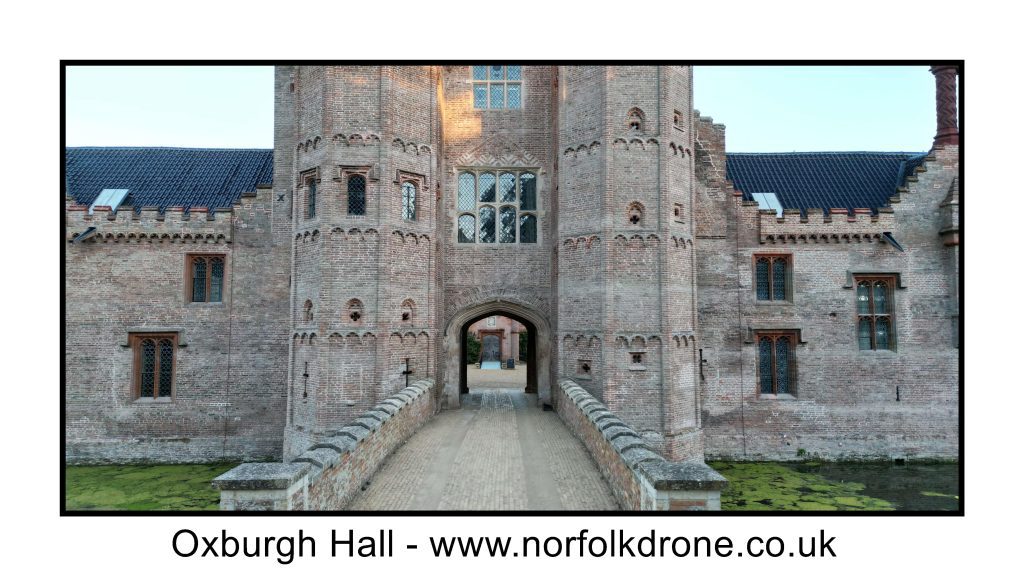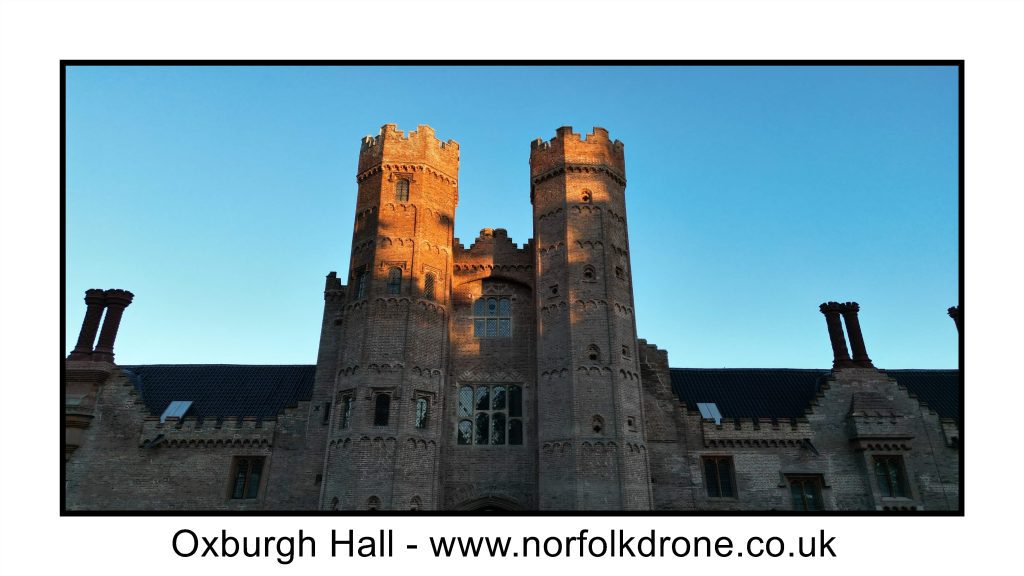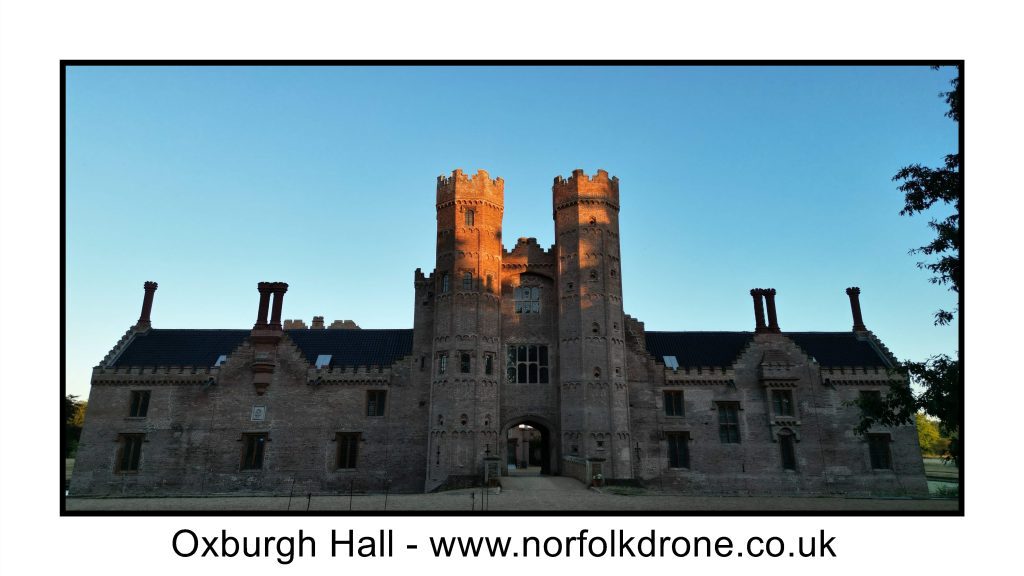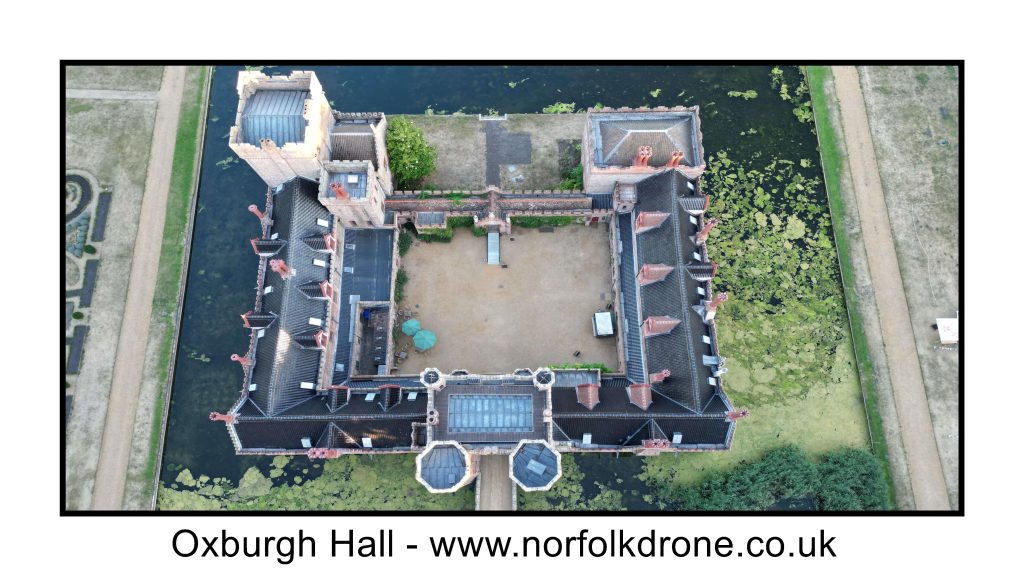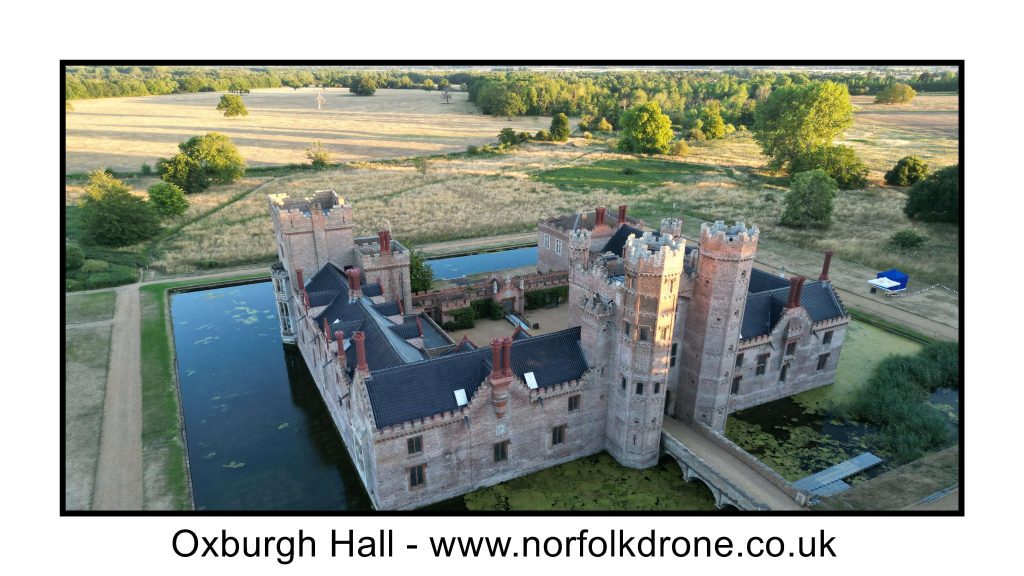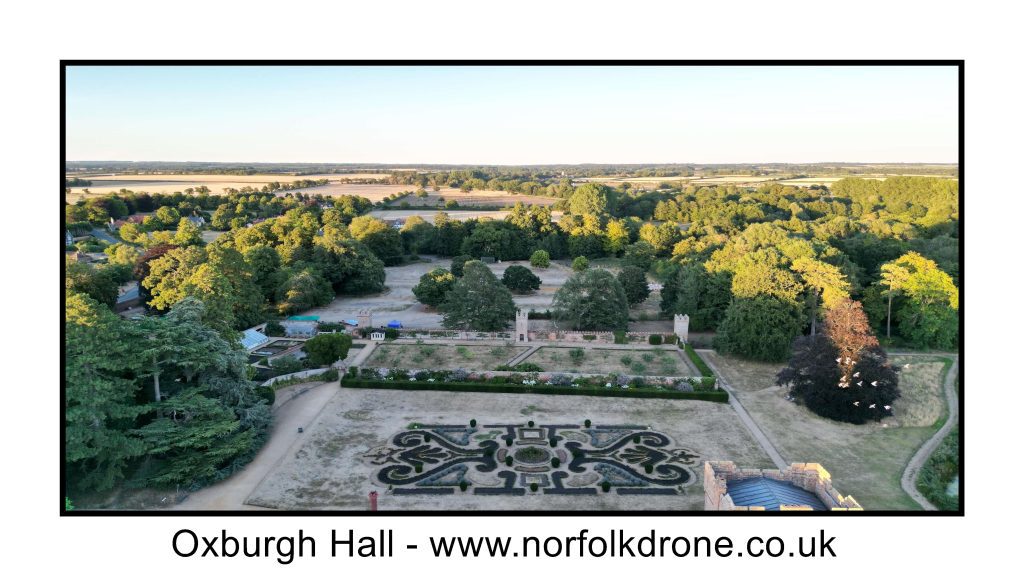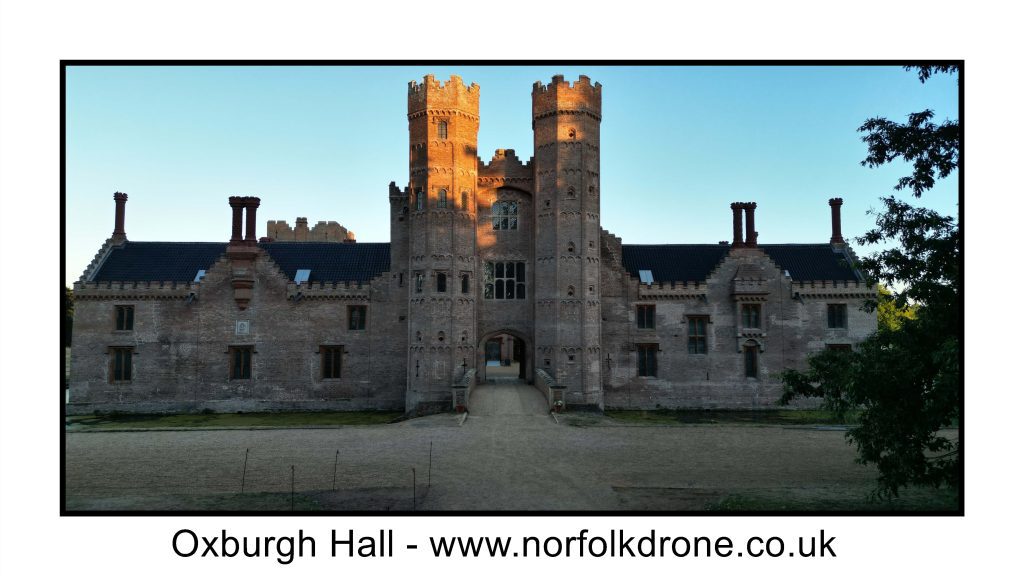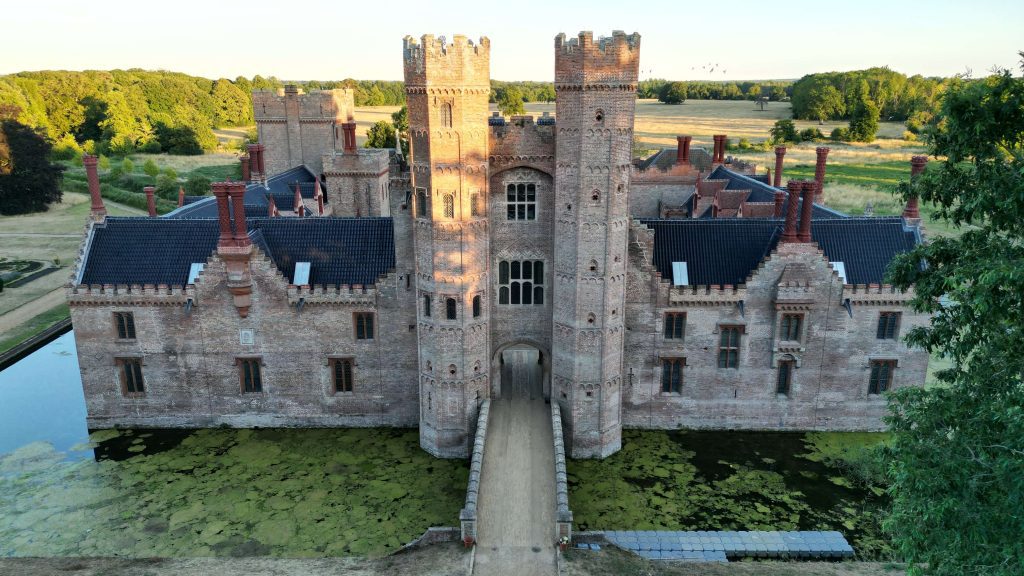Norfolk Drone Oxburgh Hall in Norfolk
Oxburgh’s contents reveal the collecting habits of a single family from the Medieval period to the 20th century. Home to the Bedingfeld family for over five centuries, Oxburgh and its collections suffered significant losses as a result of the English Civil War, 18th-century remodelling, and a sale of 1951.
The efforts of Lady Sybil Bedingfield, her niece and her daughter in recouping some of what was sold, however, did much to preserve its historic interiors. Of particular significance are the ‘Marian Hangings’, a suite of exquisitely crafted embroideries made by Mary, Queen of Scots and Bess of Hardwick when the former was under house arrest.
These are on loan to Oxburgh from the V&A. Much of the furniture, predominantly Flemish and English oak, was purchased in Belgium in the 19th century when Oxburgh was refurbished. A characteristic of much of Oxburgh’s furniture is its composition from earlier elements, in the antiquarian style.
Several such pieces were acquired from the dealer and cabinet maker Jean Francois Malfait. Exceptions to this antiquarian style are a magnificent console table, typical of the English Regency period, and a tortoiseshell and ebony Antwerp cabinet. Within the Chapel – still privately owned and used by the family – is a 16th-century Antwerp altarpiece of considerable significance as a work of Catholic devotional art in England. Other highlights include a rich collection of portraits, unique Tudor manuscripts, and an archive of historic wallpapers.
